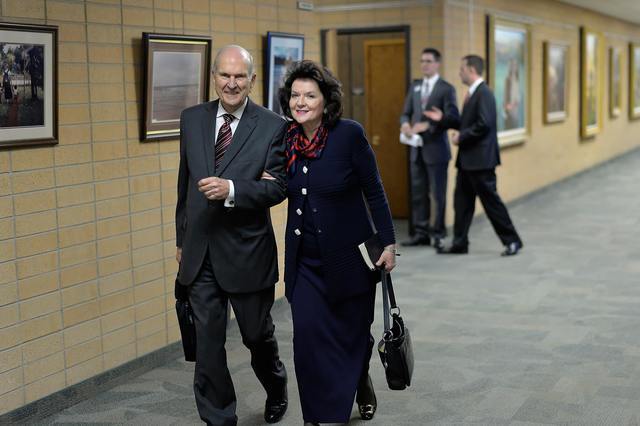From graduating with a medical degree at the age of 22 to performing open heart surgery on a prophet of the Lord, President Russell M. Nelson’s life has been one full of genius, service, compassion, accomplishment, and even heartbreak. Amidst the trials and successes of his vibrant life is one common thread: a love of the Lord. As this love has motivated and shaped President Nelson’s ambitions and actions, it’s easy to see the hand of the Lord guiding and directing President Nelson into the prophet he is today.
At times, our Heavenly Father has even sent angels to protect our prophet and preserve him for a greater work. In his book Accomplishing the Impossible, President Nelson wrote:
“The Lord made a promise to those faithfully engaged in His service. He said: ‘I will go before your face. I will be on your right hand and on your left, and my Spirit shall be in your hearts, and mine angels round about you, to bear you up.’
"My wife Wendy and I are the beneficiaries of that promise. On one occasion, we were attacked by armed men with malicious intent. They announced their purpose: to kidnap her, and to kill me. After they maliciously molested us in those evil objectives, they became totally foiled. A gun to my head failed to fire. And my wife was suddenly released from their hideous grasp. Then they disappeared as quickly as they had appeared. We were mercifully rescued from potential disaster. We know we were protected by angels round about us. Yes, the Lord’s precious promise had been invoked in our behalf.”
Between literal unseen angels that have intervened in President Nelson’s behalf and the living angels that have been put in his path, the life of our new prophet demonstrates the love of our Heavenly Father and His guiding hand in our Church today.
Finding Love and an Eternal Family
Here’s a tidbit of information many Latter-day Saints might not know about our new prophet: he was born with perfect pitch.
While interesting in itself, the most remarkable thing about this fact is that it played a key role in leading President Nelson to his first wife, Dantzel White.
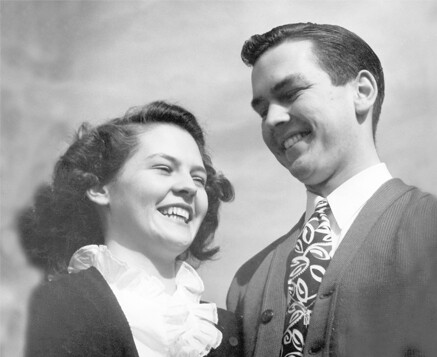
His first year as a student at the University of Utah, Russell Nelson landed a leading role in the school production Excursion. The following year he was begged by theater faculty to appear in their next production: Hayfoot, Strawfoot.
Only 17 at the time and busy with his premedical classes, Nelson only reluctantly agreed—that was, until he saw the beautiful brunette who would be playing opposite him.
Nelson sensed that this woman would become his wife, according to Russell M. Nelson: Father, Surgeon, Apostle.
Two years later, in the summer of 1944 at the tender age of 19, President Nelson knelt down in a pea patch to propose to Dantzel. A poor student, Russell had no ring, just the promise that she was the one he wanted to spend his life and eternity with.
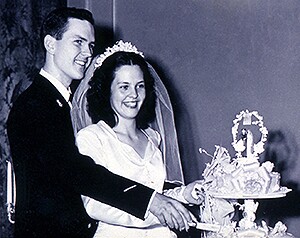
The two married the following summer on August 31, 1945, and what followed were 59 years full of love, sacrifice, tenderness, and even heartbreak.
Dantzel sacrificed much to support President Nelson as he strove to achieve his goals, even donating her own blood to help them get by when times were tough.
“The power of love between a man and a woman is special,” President Nelson shared in “Protect the Spiritual Power Line.” “The love shared with my beloved companion, Dantzel, has increased the power of love for both of us. … Once when things were exceptionally tight, she even sold her blood in between her two jobs to keep us solvent. (Her dear parents may have wondered what kind of a son-in-law they had on that occasion!) I thought of that many years later when she needed a transfusion urgently and her blood couldn’t be matched readily with donor blood from the blood bank. What a privilege it was for me to donate mine directly to her.”
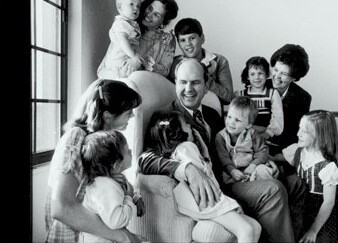
Through their years of sacrifice and service, the Nelsons had nine daughters and one son, their final child. On a summer evening in 1957, Dantzel first saw this precious little boy in a vision she had while dreaming. “He was a very special, handsome child. … He looked just like you,” she told President Nelson (Russell M. Nelson: Father, Surgeon, Apostle). Over the next almost 15 years, Dantzel regularly mentioned seeing their little boy, even though during that time the Nelsons brought home four more baby girls.
But, on March 21, 1972, Dantzel and Russell became the proud parents of a little boy, a face Dantzel recognized the moment she saw him.
Though full of love, President Nelson’s family life was also full of patience and sacrifice. During this time, he came to understand how to give himself more fully to others and how to rely on the Lord’s timing, not his own. But, it was during these times that President Nelson learned what is most important in life and how dear that can be in reaching a fulfilling, transcendent happiness even on earth.
Growing in Knowledge and "Going to Work"
Touting six degrees (three of which are honorary) as well as three honorary professorships from universities in the People’s Republic of China, President Nelson embodies the quest for knowledge and self-improvement that each of us strives for in this life. President Nelson’s drive fueled him to jump into medical school even while he was finishing his final year of his bachelor’s degree at the University of Utah. Then, through hard work and his unquenchable determination, he finished his four-year medical program a year early, becoming an M.D. in 1947 at the age of 22.
What began as a meteoric educational experience soon turned into an explosive career, leading him to earn a spot on the list of Who’s Who in America, Who’s Who in the World, and Who’s Who in Religion.
Among some of his other awards and credentials earned over his career are: President of the Utah State Medical Association, "Heart of Gold Award" recipient, President of the Thoracic Surgical Directors Association, President of the Society for Vascular Surgery, Director of the American Board of Thoracic Surgery, and Chairman of the Council on Cardiovascular Surgery for the American Heart Association.
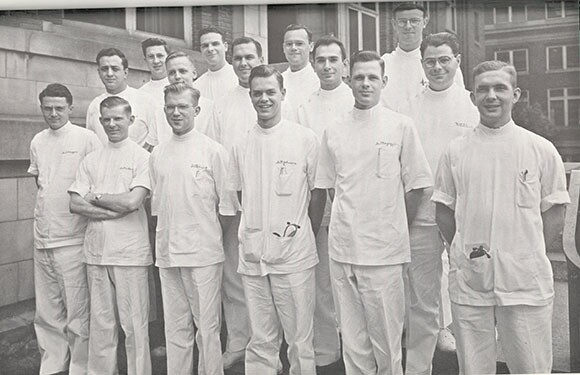
While pursuing additional education in a joint surgical training and Ph.D. program at the University of Minnesota, President Nelson helped work on a research team that built a heart-lung machine that made the first open-heart operation possible in 1951. Later, President Nelson built his own heart-lung bypass machine and performed the first open-heart surgery in Utah. Just a year later, President Nelson performed the first successful pediatric heart surgery.
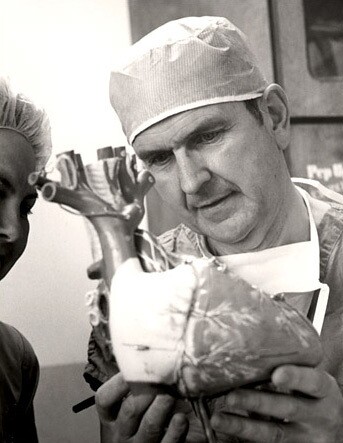
No doubt, President Nelson’s career has been one of many firsts and many successes. But, President Nelson poignantly remembers many of the failures in his pioneering efforts.
“Fifty-eight years ago I was asked to operate upon a little girl, gravely ill from congenital heart disease,” he shared in his October 2015 general conference address.“Her older brother had previously died of a similar condition. Her parents pleaded for help. I was not optimistic about the outcome but vowed to do all in my power to save her life. Despite my best efforts, the child died. Later, the same parents brought another daughter to me, then just 16 months old, also born with a malformed heart. Again, at their request, I performed an operation. This child also died. This third heartbreaking loss in one family literally undid me.
“I went home grief stricken. I threw myself upon our living room floor and cried all night long. Dantzel stayed by my side, listening as I repeatedly declared that I would never perform another heart operation. Then, around 5:00 in the morning, Dantzel looked at me and lovingly asked, ‘Are you finished crying? Then get dressed. Go back to the lab. Go to work! You need to learn more. If you quit now, others will have to painfully learn what you already know.’”
Since that time, President Nelson has continued to “go to work,” even when life is at its most challenging. This has allowed him to stand as a pioneer, not only within the medical profession, but later as an apostle and now as a prophet.
President Nelson also credits this experience as what helped him rise to the call when he was asked to operate on President Spencer W. Kimball, who was then serving as the President of the Quorum of the Twelve. "I shall never forget the feeling I had as his heart resumed beating, leaping with power and vigor,” said President Nelson, according to the Deseret News. “At that very moment, the Spirit made known to me that this special patient would live to become the prophet of God on earth."
Finding God in War
President Nelson’s success helping to create a heart-lung machine in 1951 drew the attention of the Surgeon General’s Office in Washington, D.C. With the United States entangled in the Korean War, the Surgeon General’s Office decided to make the most of President Nelson’s obligated military duty by selecting him to form a surgical research unit at the Walter Reed Army Medical Center.
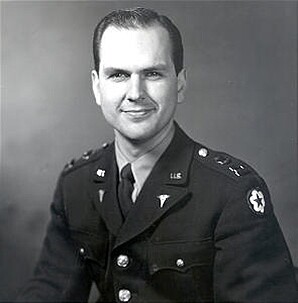
After uprooting their family and just days after the birth of their second child, plans changed for First Lieutenant Nelson, who was transferred into active duty. During that summer of 1951, President Nelson toured South Korea, including the battlefront, visiting mobile army surgical hospital units and suggesting improvements.
During this time, President Nelson came face to face with life-threatening danger, paralyzing fear, crippling handicaps, pain, death, heartbreak, disease, and those who lost limbs, lost their innocence, and lost hope. No doubt President Nelson’s kindness and compassion helped heal and uplift those suffering in such terrible conditions, even as his own empathy grew.
In one instance, President Nelson told the story of meeting a young Latter-day Saint soldier in a hospital—one who helped him understand the true breadth of faith:
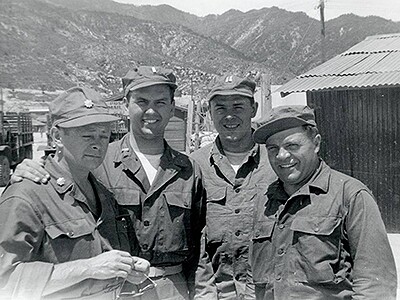
"As I came to one mobile army surgical hospital, one of the doctors who knew I was a member of The Church of Jesus Christ of Latter-day Saints asked me if I would be willing to see a Mormon boy who'd been hit in the spine with a missile. He was a paraplegic; wouldn't ever use his legs again and so as I was introduced to this young man, he could see that I didn't know what to say. I greeted him and expressed condolences and love as best I could and he said, 'Oh don't worry about me, Brother Nelson. I know why I am here. And I don't use my legs to work out my salvation. I do that with my faith.'
"I learned a lot from that young man. He was under age. He was not even old enough to be an elder, but there he was with great faith facing a future of inability to use his lower extremities. I often wonder what ever happened to that wonderful young man who taught me a lot about faith" ("Saints at War: Korea and Vietnam," pages 120-121).
Learning Chinese to Fulfill the Lord's Work
In addition to his travels with the army and as a surgeon, Russell Nelson often traveled with his family. A man with a sharp mind and wonderful curiosity to learn, the connections Nelson formed and knowledge he gained in his early years and Church service helped immensely in spreading the gospel to distant parts of the world.
While serving as regional representative of the Church, a specific charge President Nelson heard from President Kimball changed his life forever:
“He told all of us there that nothing is too hard for the Lord, but that we must do our part—to pray
for the people of China, to start learning Mandarin … So I started praying that way, and Dantzel and I began to study Mandarin” (“A Study in Obedience”).

President Nelson soon became fluent in Mandarin. President Nelson visited China several times during his career, introducing open-heart surgery to China in 1980 and helping train medical students.
After being called to the Quorum of the Twelve apostles, President Nelson received a request from
some of his medical friends in China. A Chinese icon’s heart was failing—an opera singer the people greatly admired. The doctors felt President Nelson was the only one who could perform the operation. Asking permission from the president of the Quorum of the Twelve and the First Presidency, President Nelson was granted permission to travel to China to perform the operation, making it his final heart operation. It was that same year President Nelson became the first person ever to become an honorary professor of Shandong Medical College. A decade later, President Nelson traveled to Beijing with Neal A. Maxwell at the official invitation of the Vice Premier of China.
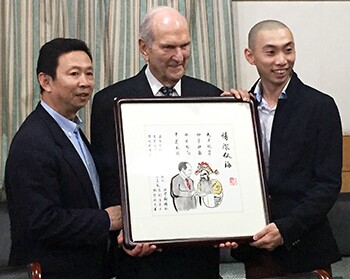
Besides his pioneering work in Asia, President Nelson was also the first apostle to visit Kazakhstan when he dedicated the country for missionary work in 2003. He also visited 31 countries in just five years while building up the Church in Hungary, Czechoslovakia, Romania, Bulgaria, Russia, Ukraine, and Estonia.
His travels around the world have opened doors and transformed entire country’s views about the Church, its message, and missionary work. Because of him, many around the world are blessed to have the gospel in their lives.
Finding Hope Amidst Death and Darkness
Working in the medical profession and on the front lines as an army doctor in the Korean War, President Nelson became well acquainted with death and suffering.
But none were so personal, none were so devastating as the losses that came to his family. In September of 1991, President Nelson received a distressed call from Dantzel: their fifth daughter Emily had been diagnosed with breast cancer. This 33-year-old mother of four was then expecting her fifth child. Their young, healthy grandson was born in March of 1992 in the midst of a stream of chemotherapy and cancer treatments.
The following year, still in the midst of this struggle, Dantzel began feeling weak and listless. As Emily’s case worsened, Dantzel learned she had Stage IV lymphoma in 1994.
During this time when both his precious daughter and wife were struggling with life-threatening diseases, President Nelson began writing the book, The Gateway We Call Death, finding peace in delving into the Plan of Happiness and the glorious exaltation that awaits souls in the next life.
His last conversation with his daughter taught President Nelson of the importance of the temple and the nature of eternal families. Elder Nelson recorded in his journal:
“While Mother was tending baby Jordan in the adjoining room, Brad and I had an incredible experience with Emily. We were speaking to her about the temple. She had mentioned how grateful she was for her temple endowment and sealing that would perpetuate her family forever. Then she asked the question, ‘Do you see Nana and Popsy?
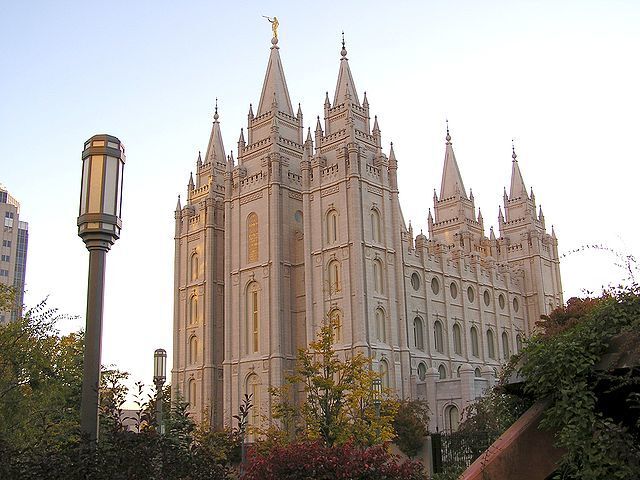
“I replied, ‘No Emily, but I am sure that when the time comes they will be there to greet you and care for you.’
“She mentioned Nana and Popsy again. Then she asked another question: ‘Daddy, am I dying now?’
“I said, ‘I don’t think so sweetheart. You are with Brad and me.’
“She resumed our conversations: ‘Now we were speaking about the temple, weren’t we?’ She threw her arms around my neck, gave me a kiss, and said, ‘Daddy, thank-you, thank-you! Thank-you for that great blessing’—referring to the temple” (Russell M. Nelson: Father, Surgeon, Apostle).
Emily died two days later on January 29, 1995. Dantzel didn’t follow her daughter until a decade later, on February 12, 2005, when she died unexpectedly in the Nelson home.
In 2006, President Nelson married Wendy Watson, a marriage and family therapist and professor at BYU. They were married in the Salt Lake Temple and together have visited, encouraged, and inspired Saints across the world.
Becoming a Servant of the Lord
When President Nelson was called as an apostle to the Quorum of the Twelve on April 6, 1984, he filled a vacancy that had lasted for over a year. He was sustained at the same session when Elder Dallin H. Oaks was sustained—making the calling a historic one in many ways.

President Nelson recalls that, while doing his rounds at the hospital, he received a phone call from the secretary to President Spencer W. Kimball asking him if he could come to the office of the First Presidency.
“I said, ‘Of course, I’ll be happy to—but where is it?’” President Nelson recalled. “I didn’t have any idea where it was. That was how green I was.”
But, despite this fact, President Nelson stepped into his new role with vigor, serving and inspiring millions throughout the Church. About this sacred call, President Nelson said:
“There is no way you can describe it,” he said. “It is the most sacred thing that can happen to a man in this life. It is life-changing, yes. But, hopefully, he, in turn, will be able to change the lives of many other people toward the Lord. This is what we do. We are servants of the Lord. We are His agents and that means salvation and exaltation for the people who come under the sphere of His influence.”
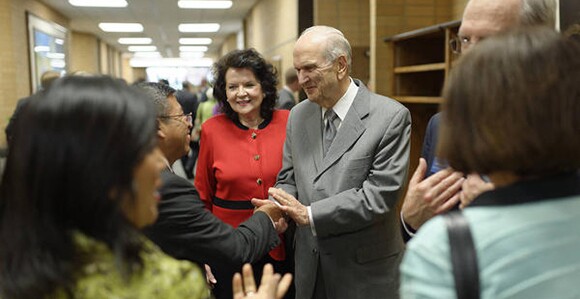
There’s no more sacred work or inspired call than serving as the Savior’s witness on earth to prepare a man to lead His Church on the Earth today. There’s no doubt that throughout his life, President Nelson has been prepared to be the chosen prophet of the Church of Jesus Christ of Latter-day Saints today.

